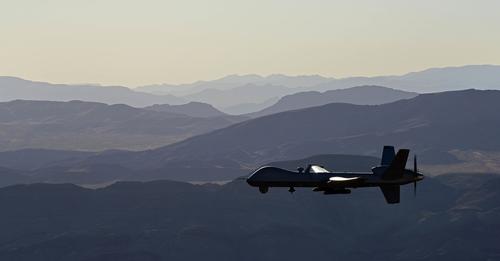In conjunction with the War Industries Resisters Network Week of Action and World Beyond War’s Global Mobilization to #StopLockheedMartin, Safe Skies Clean Water Wisconsin, Veterans for Peace Madison, and Interfaith Peace Working Group will be asking people how they want their tax dollars to be spent. Come to the corner of King Street and the State Capitol Saturday, April 23rd – and distribute your “beans” where you want your income tax to go. Begins around 9am.
Weapons & War
Health Care
Education
Infrastructure
Food & housing
Can’t make it? SIGN THE PETITION or Endorse as an organization
Communication Tools for this action.
“Lockheed Martin is by far the largest weapons producer in the world. From Ukraine to Yemen, from Palestine to Colombia, from Somalia to Syria, from Afghanistan and West Papua to Ethiopia, no one profits more from war and bloodshed than Lockheed Martin.
We call on people around the world to join the Global Mobilization to #StopLockheedMartin starting on April 21, the same day that Lockheed Martin holds its Annual General Meeting.
Individuals and organizations everywhere — we invite you to call for protests in your towns and cities, wherever Lockheed Martin produces weapons or profits from violence we must mobilize to #StopLockheedMartin.”

“For U.S. arms makers, however, the greatest benefits of the war in Ukraine won’t be immediate weapons sales, large as they are, but the changing nature of the ongoing debate over Pentagon spending itself.
Of course, the representatives of such companies were already plugging the long-term challenge posed by China, a greatly exaggerated threat, but the Russian invasion is nothing short of manna from heaven for them, the ultimate rallying cry for advocates of greater military outlays. Even before the war, the Pentagon was slated to receive at least $7.3 trillion over the next decade, more than four times the cost of President Biden’s $1.7 trillion domestic Build Back Better plan, already stymied by members of Congress who labeled it “too expensive” by far. And keep in mind that, given the current surge in Pentagon spending, that $7.3 trillion could prove a minimal figure.
Indeed, Pentagon officials like Deputy Secretary of Defense Kathleen Hicks promptly cited Ukraine as one of the rationales for the Biden administration’s proposed record national-security budget proposal of $813 billion, calling Russia’s invasion “an acute threat to the world order.” In another era that budget request for Fiscal Year 2023 would have been mind-boggling, since it’s higher than spending at the peaks of the conflicts in Korea and Vietnam and over $100 billion more than the Pentagon received annually at the height of the Cold War.
Despite its size, however, congressional Republicans — joined by a significant number of their Democratic colleagues — are already pushing for more. Forty Republican members of the House and Senate Armed Services Committees have, in fact, signed a letter to President Biden calling for 5% growth in military spending beyond inflation, which would potentially add up to $100 billion to that budget request. Typically enough, Representative Elaine Luria (D-VA), who represents the area near the Huntington Ingalls company’s Newport News military shipyard in Virginia, accused the administration of “gutting the Navy” because it contemplates decommissioning some older ships to make way for new ones. That complaint was lodged despite that service’s plan to spend a whopping $28 billion on new ships in FY 2023.
Who Benefits?
That planned increase in shipbuilding funds is part of a proposed pool of $276 billion for weapons procurement, as well as further research and development, contained in the new budget, which is where the top five weapons-producing contractors — Lockheed Martin, Boeing, Raytheon, General Dynamics, and Northrop Grumman — make most of their money. Those firms already split more than $150 billion in Pentagon contracts annually, a figure that will skyrocket if the administration and Congress have their way. To put all of this in context, just one of those top five firms, Lockheed Martin, was awarded $75 billion in Pentagon contracts in fiscal year 2020 alone. That’s considerably more than the entire budget for the State Department, dramatic evidence of how skewed Washington’s priorities are, despite the Biden administration’s pledge to “put diplomacy first.”
The Pentagon’s weapons wish list for FY 2023 is a catalog of just how the big contractors will cash in. For example, the new Columbia Class ballistic missile submarine, built by General Dynamics Electric Boat plant in southeastern Connecticut, will see its proposed budget for FY 2023 grow from $5.0 billion to $6.2 billion. Spending on Northrop Grumman’s new intercontinental ballistic missile (ICBM), the Ground Based Strategic Deterrent, will increase by about one-third annually, to $3.6 billion. The category of “missile defense and defeat,” a specialty of Boeing, Raytheon, and Lockheed Martin, is slated to receive more than $24 billion. And space-based missile warning systems, a staple of the Trump administration-created Space Force, will jump from $2.5 billion in FY 2022 to $4.7 billion in this year’s proposed budget.
Among all the increases, there was a single surprise: a proposed reduction in purchases of the troubled Lockheed Martin F-35 combat aircraft, from 85 to 61 planes in FY 2023. The reason is clear enough. That plane has more than 800 identified design flaws and its production and performance problems have been little short of legendary. Luckily for Lockheed Martin, that drop in numbers has not been accompanied by a proportional reduction in funding. While newly produced planes may be reduced by one-third, the actual budget allocation for the F-35 will drop by less than 10%, from $12 billion to $11 billion, an amount that’s more than the complete discretionary budget of the Centers for Disease Control and Prevention.
Since Lockheed Martin won the F-35 contract, development costs have more than doubled, while production delays have set the aircraft back by nearly a decade. Nonetheless, the military services have purchased so many of those planes that manufacturers can’t keep up with the demand for spare parts. And yet the F-35 can’t even be properly tested for combat effectiveness because the simulation software required is not only unfinished, but without even an estimated completion date. So, the F-35 is many years away from the full production of planes that actually work as advertised, if that’s ever in the cards.
A number of the weapons systems which, in the Ukraine moment, are guaranteed to be showered with cash are so dangerous or dysfunctional that, like the F-35, they should actually be phased out. Take the new ICBM. Former Secretary of Defense William Perry has called ICBMs “some of the most dangerous weapons in the world” because a president would only have minutes to decide whether to launch them in a crisis, greatly increasing the risk of an accidental nuclear war based on a false alarm. Nor does it make sense to buy aircraft carriers at $13 billion a pop, especially since the latest version is having trouble even launching and landing aircraft — its primary function — and is increasingly vulnerable to attack by next-generation high-speed missiles.
The few positives in the new budget like the Navy’s decision to retire the unnecessary and unworkable Littoral Combat Ship — a sort of “F-35 of the sea” designed for multiple tasks none of which it does well — could easily be reversed by advocates from states and districts where those systems are built and maintained. The House of Representatives, for instance, has a powerful Joint Strike Fighter Caucus, which, in 2021, mustered more than one-third of all House members to press for more F-35s than the Pentagon and Air Force requested, as they will no doubt do again this year. A Shipbuilding Caucus, co-chaired by representatives Joe Courtney (D-CT) and Rob Wittman (R-VA), will fight against the Navy’s plan to retire old ships to buy new ones. (They would prefer that the Navy keep the old ones and buy new ones with more of your tax money up for grabs.) Similarly, the “ICBM Coalition,” made up of senators from states with either ICBM bases or production centers, has a near perfect record of staving off reductions in the deployment or funding of those weapons and will, in 2022, be hard at work defending its budgetary allocation.”
How Pentagon Contractors Are Cashing in on the Ukraine Crisis
By William D. Hartung and Julia Gledhill
An excellent documentary. We might consider having a showing. 
The Pentagon and CIA Have Shaped Thousands of Hollywood Movies into Super Effective Propaganda – World Beyond War . . .
Find an event. Let them know about an event you are part of.

“This type of revolving-door behavior should be prohibited for military officials to serve in a private capacity representing military contractors…:
World Beyond War Projects

Milwaukee Billboard [Democratic Party Convention]
Veterans for Peace Madison
Clarence Kailin, Chapter 25
website… https://madisonvfp.org/
facebook… https://www.facebook.com/groups/madisonvfp
twitter… https://twitter.com/MadisonVfp
@MadisonVfp





























